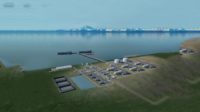Obituaries
Jim Rossberg, 65, Was Longtime ASCE Advocate for Improved Structural Standards

In 1997, Rossberg started ASCE's Structural Engineering Institute, which now has 30,000 members.
Photo courtesy of American Society of Civil Engineers
James “Jim” Rossberg, who fostered a community of structural engineers and helped expand the scope of the bible for structural design loads, died this week, the American Society of Civil Engineers announced. He was 65.
Rossberg joined ASCE in 1993 as part of its Civil Engineering Research Foundation. In 1997, he launched ASCE’s Structural Engineering Institute (SEI), which today has 30,000 members. He eventually came to oversee all of the group’s institutes, as managing director of engineering programs. In the role, he also formed the Utility, Engineering and Surveying Institute.
Rossberg was also responsible for helping grow the standard ASCE 7, Minimum Design Loads and Associated Criteria for Buildings and Other Structures. He grew the program from 10 standards to more than 50.
And thanks to Rossberg's legacy, ASCE continues to add to the standard's scope. Thomas Smith, executive director of ASCE, notes that ASCE 7-22 added a tornado chapter, and the next iteration may incorporate climate data.
“It’s really had a tremendous impact on advancing public health and safety,” Smith says, of the standard.
Donald Dusenberry, who chairs the ASCE/SEI committees on blast protection of buildings and disproportionate collapse mitigation of building structures, says Rossberg “was hugely effective” in coordinating the volunteer engineer members of the standards-writing committees. Rossberg recruited Dusenberry for the leadership role on both committees he chairs.
“He was just a nice man,” Dusenberry says. “He was able to connect with people and instantly get their trust.”
After the 9/11 terrorist attacks in 2001, Rossberg formed teams to assess the performance of the World Trade Center's 110-story twin towers and the Pentagon. On Sept. 11, Dusenberry and Rossberg were on a conference call with other engineers, by coincidence discussing the ASCE blast standard, when the plane hit the second WTC tower in New York City, and Rossberg saw smoke rising over the Pentagon from where he had parked to take the call.
The group published the first assessment of the behavior and failure mechanisms of buildings at and around Ground Zero in Manhattan. Rossberg was recognized as a 2002 ENR Newsmaker for organizing that effort.
Rossberg also contributed to other ASCE disaster response teams, including for the Murrah Federal Building in Oklahoma City, Hurricane Katrina and the 2010 Chilean earthquake, according to ASCE.
In 2022, ASCE honored Rossberg with the William H. Wisely Award for his efforts to “better [ASCE’s] history, tradition, development and technical and professional activities.” At the time of Rossberg’s retirement later that year, he shared with his ASCE colleagues that his proudest achievement with the organization was the staff he hired and volunteers he brought on.
Smith credits Rossberg for helping to hire and mentor many of ASCE’s technical staff and managing directors, as well as recruiting volunteers. “He really was the foundation of our technical staff team,” he says.
Rossberg earned a bachelor’s degree in civil engineering and master’s in structural engineering from Old Dominion University, according to his LinkedIn profile. He worked as a project engineer until he took a role at the National Ready Mixed Concrete Association, the first of several industry groups he helped guide before joining the staff at ASCE.
“He was very effective through his long career at ASCE at making things happen for the good of the profession and, ultimately, society,” Dusenberry says.
Ronald O. Hamburger, consulting principal with Simpson Gumpertz & Heger, recalls that he met Rossberg while on the board of the National Council of Structural Engineering Associations. He says a friendship grew despite their different organizations, and “Jim was a huge contributor to the eventual partnership that blossomed and thrived” between SEI, NCSEA and the Coalition of American Structural Engineers.
Hamburger collaborated with Rossberg on some of the highlights of Rossberg’s career, including ASCE 7, and the World Trade Center disaster assessment. Their expert panel recommended changes to the International Building Code in response to the twin towers’ destruction.
“I always found him to be a tireless advocate for the interests of practicing structural engineers, and to be effective in pulling together coalitions of engineers to solve tough problems,” Hamburger says. “Beyond that, he was a gentleman and a friend. I will miss him greatly.”





